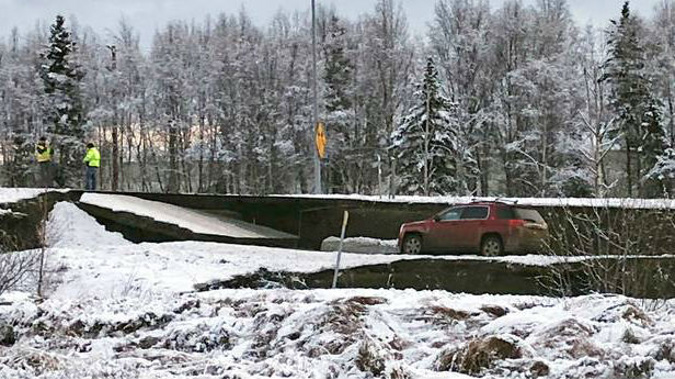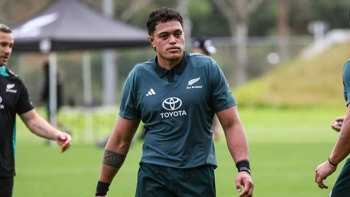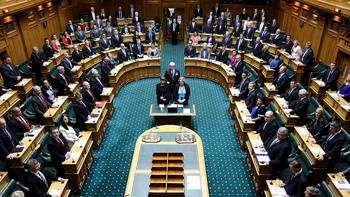
The White House says President Donald Trump has been briefed about the earthquake that rocked Anchorage early today, causing damage to buildings and infrastructure.
Press Secretary Sarah Huckabee Sanders tweeted that Trump was monitoring the reports of damage.
Trump is in Argentina at the Group of 20 summit.
Huckabee added: "We are praying for the safety of all Alaskans."
There have been no immediate reports of serious injuries or deaths after the 7.0-magnitude earthquake.
Officials cancelled a tsunami warning for coastal areas of southern Alaska following the earthquake.
National Tsunami Warning Centre senior technician Michael Burgy said the tsunami warning was automatically generated, Officials monitored gauges to see if any underwater landslides would generate tsunami waves.
Because there were none, the warning was cancelled.
Police had told residents of the island community of Kodiak to head to higher ground.
The earthquakes measuring 7.0 and 5.8 rocked buildings and buckled roads in Anchorage, prompting people to run from their offices or take cover under desks and triggering a warning to residents in Kodiak to flee to higher ground for fear of a tsunami.
/arc-anglerfish-syd-prod-nzme.s3.amazonaws.com/public/TSH7TD56RRG2HIWS3GB474HI2U.jpg)
The US Geological Survey said the first and more powerful quake was centred about 12km north of Anchorage, Alaska's largest city.
Cracks could be seen in a two-story downtown Anchorage building. It was unclear whether there were injuries.
Photographs posted to social media sites showed damage that included collapsed ceiling tiles at an Anchorage high school and buckled roads. One image showed a car stranded on an island of pavement, surrounded by cavernous cracks where the earthquake split the road.
Cereal boxes and packages of batteries littered the floor of a grocery store, and picture frames and mirrors were knocked from living room walls.
People went back inside buildings after the first earthquake struck, but the 5.8 aftershock about five minutes later sent them running back into the streets.
Shortly after the quake, a tsunami warning was issued for the southern Alaska coastal areas of Cook's Inlet and part of the Kenai peninsula. Kodiak police on Kodiak Island warned people in the city of 6100 to "evacuate to higher ground immediately" because of "wave estimated 10 minutes".
The only road between Anchorage and Wasilla in Alaska has been heavily damaged. Impassable. This is what a 7.0 magnitude earthquake looks like. Photo via @AOC_Security: pic.twitter.com/KdG9gB345M
— WeatherOptics (@weatheroptics) November 30, 2018
Alaska averages 40,000 earthquakes per year. It has more large quakes than the 49 other states combined. Southern Alaska has a high risk of earthquakes because of tectonic plates sliding past each other under the region.
Brandon Slaton was alone and home and soaking in the bathtub when the Alaska earthquake struck.
Slaton just moved to Kenai, Alaska with his wife from Arizona and had never felt an earthquake before the 7.0 magnitude temblor hit on Friday morning.
Slaton says the quake created a powerful bath-and-forth sloshing in the bathtub and before he knew it, he'd been thrown out of the tub by the force of the waves.
His 54kg mastiff panicked and tried to run down the stairs, but the house was swaying back and forth so much she was thrown off her feet and into a wall and tumbled to the base of the stairs.
Slaton says: "It was anarchy. There's no pictures left on the walls, there's no power, there's no fish tank left. Everything that's not tied down is broke."
Slaton ran into his son's room after the shaking stopped and found his fish tank shattered and the fish on the closet floor, gasping for breath.
He grabbed the Betta fish and put it in another bowl.
He says the area was eerily quiet. His children, 11 and 16, were evacuated from school.
David Harper was getting some coffee at a store when the low rumble began and intensified into something that sounded "like the building was just going to fall apart." Harper ran to the exit with other patrons there.
"The main thought that was going through my head as I was trying to get out the door was, 'I want this to stop,'" he said. Harper said the quake was "significant enough that the people who were outside were actively hugging each other. You could tell that it was a bad one."
On March 27, 1964, Alaska was hit by a magnitude 9.2 earthquake, the strongest recorded in US history, centered about 120km east of Anchorage. The quake, which lasted about four and a half minutes, and the tsunami it triggered, claimed about 130 lives.
Take your Radio, Podcasts and Music with you









